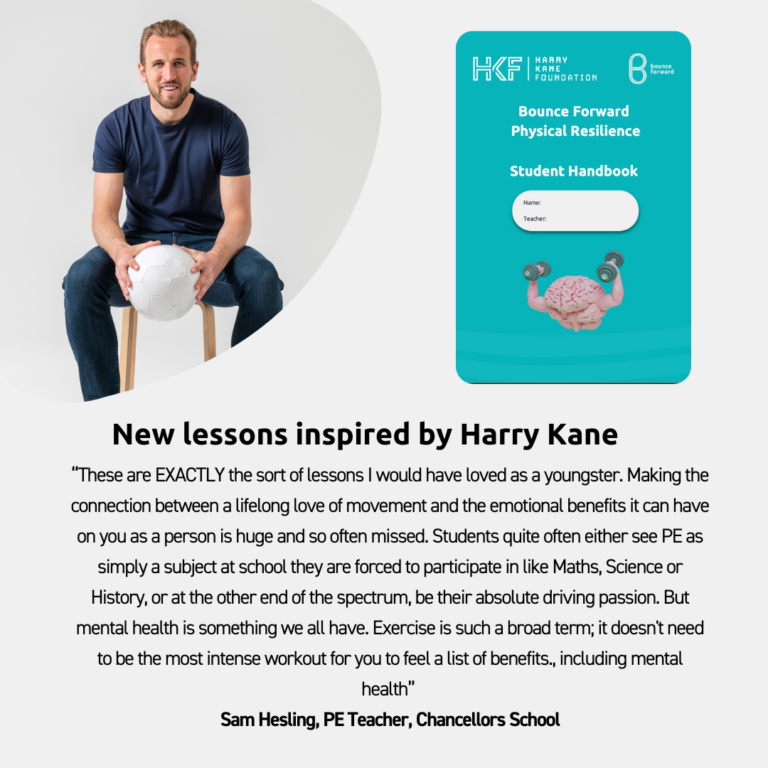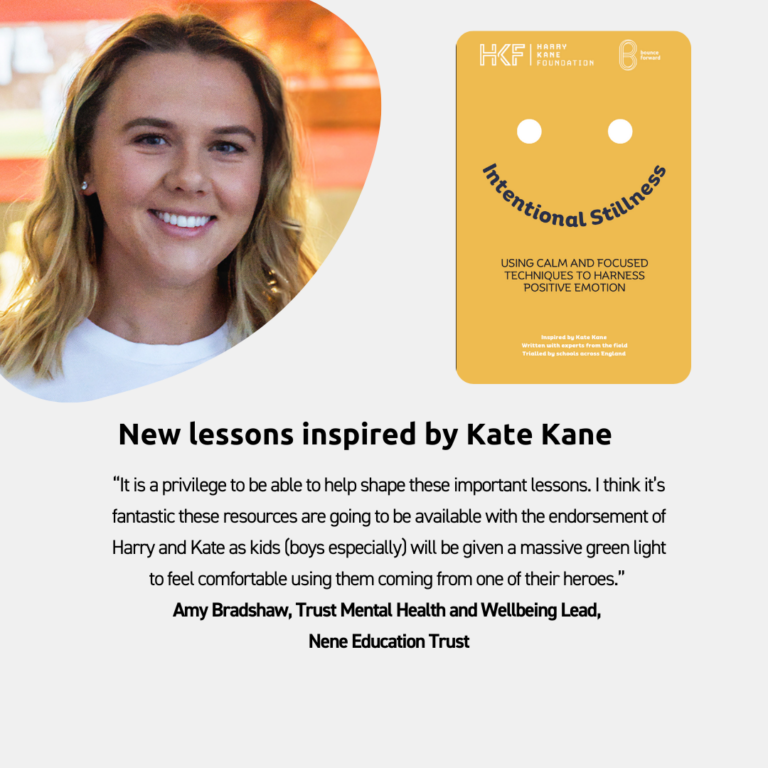Included in guidance by Department for Education and HM Treasury!
Healthy Minds and Healthy Minds Compact are programmes designed to build the psychological skills young people need to thrive – from mental resilience and emotional wellbeing to empathy, optimism, and communication.
Choose the full 69-lesson developmental programme for deep, longitudinal impact across Years 7–11, or Compact for a more flexible approach with shorter, high-impact activities.
Both options equip young people with the essential tools to live well, handle challenges, and bounce forward.
Two pathways. One purpose: developing skills that last a lifetime.
Teenagers today are under more pressure than ever before. Rising rates of anxiety, stress, and poor mental health show us that waiting until crisis point is too late. Prevention isn’t optional – it’s essential. Every young person deserves the chance to thrive, not just survive, and education is the key to making that happen.
Adolescence is a window of opportunity – a turning point that shapes the rest of life. This is the moment to equip teenagers with the tools of psychological fitness. With half of all lifelong mental health problems beginning by just 14, the time to act is now.
We believe every teenager deserves the skills to thrive – and schools are the best place to make that happen. That’s why we train teachers to deliver Healthy Minds, embedding it as part of a whole-school approach for students aged 11–16. For younger pupils, we also offer Healthy Minds Compact: a series of short, impactful activities for Years 7 & 8 that fit seamlessly into tutor time.
Healthy Minds isn’t just another programme. It’s the most evidence-based life skills programme of its kind, proven by the Education Endowment Foundation through tracking 10,000 teenagers over five years. The results speak for themselves – Healthy Minds works.

Lord Layard, Emeritus Professor of Economics at the London School of Economics, and Co-editor of the World Happiness Report and Global Policy Report
Healthy Minds has a positive impact on general health, physical health, externalising behaviours and life satisfaction - which leave a long arm into adult outcomes.
Healthy Minds improves health-related outcomes without adversely affecting academic achievement, despite diverting time away from traditional academic subjects.
Improves attendance and reduces fixed-term exclusions, in particular for students receiving free school meals.
Year 7
Lesson 1 Resilience & Harnessing Positive Emotions
Lesson 2 Connecting the Brain, Emotions & Thoughts
Lesson 3 Introducing Gremlin Beliefs
Lesson 4 Optimism & Evidence
Lesson 5 WoBbLe
Lesson 6 Resilience Planning
Year 7
Lesson 1: Introduction to Intentional Stillness
Lesson 2 Using Intentional Stillness to Deal with Anxiety
Lesson 3 Using Intentional Stillness to aid sleep
Lesson 4 Connection to Others
Year 7
Lesson 1 Introduction to media literacy and social media
Define media literacy
Explain media literacy concepts
Identify text and subtext in media examples
Recognise the characteristics of social media versus traditional media
Lesson 2 Fantasy and reality
Define and recognise some characteristics of reality television
Identify the difference between reality and fantasy in various types of media
See the untold stories when watching reality television
Define and understand what it means to set a boundary in relation to on-line
Lesson 3 Advantages & disadvantages of social media & setting boundaries
Identify the advantages and disadvantages of social media
Share experiences and stories of boundary setting or boundary crossing online
Understand the impact of social media activity on future goals and aspirations
Lesson 4 Benefits of social media
Explore the positives of using social media and how it impacts how we receive,alter, and share information
Create personal guidelines for using social media in a positive way.
Discuss how media can be used to build community, find support, and decrease isolation in their lives
Lesson 5 Creating identity maps
Describe my online identity and how I want to be thought of by others online
Create a map connecting my current identity to future goals
Describe my map to other people
Lesson 6 Presenting social media identity maps
Communicate how social media forms part of my identity now and in the future
Identify that other students have different ideas and identities and use social media indifferent ways
Explain how my online identity may influence my future
Year 8
Lesson 1 Revisit the Skills of Resilience
Lesson 2 Optimistic Thinking
Lesson 3 WoBbLe
Lesson 4 Assertive Communication
Lesson 5 Moving On
Lesson 6 Empathy & Resilience Planning
Year 8
Lesson 1 Being part of a group & my adult self
Lesson 2 Positive & negative role models
Lesson 3 Bucket list and timelines
Lesson 4 Timelines continued
Lesson 5 Actions
Lesson 6 Possible Selves Poster Boards
Lesson 7 Pathways to the future
Lesson 8 Solving everyday problems
Lesson 9 Solving everyday problems & looking forward
In 2023 Bounce Forward and Harry Kane Foundation formed a partnership with a shared mission to inspire and transform a generation's thinking about mental health.
The Physical Resilience lessons are inspired and co-authored with Harry Kane, and endorsed by experts in the field. The lessons feature insight and video appearances from Harry's personal experience and perspective as an elite athlete.
Lesson 1: Exercise and mental health
Understand the link between exercise and mental health.
Consider how different people think about different types of physical activities.
Practise challenging unhelpful perceptions about the link between exercise and mental health.
Identify ways to maintain good physical health.
Lesson 2: Nutrition and mental health
Understand the link between nutrition and mental health.
Consider barriers that can get in the way of maintaining healthy nutrition.
Identify key facts and myths for a mentally healthy diet.
Lesson 3: Sleep and the adolescent brain
Understand the link between sleep and good mental health.
Examine different types of sleep.
Understand what is happening in the brain when we are asleep.
Lesson 4: Facts and common beliefs about sleep
Consider key facts about the teenage brain.
Understand the impact of a lack of sleep.
Challenge common beliefs that can get in the way.
Lesson 5: Sleep routines
Identify helpful sleep routines.
Exploring how to take control of my sleep.
Create a sleep diary.
Year 8
Lesson 1 Introduction to media literacy and social media
Lesson 2 Media and gender constructions
Lesson 3 Media and body image
Lesson 4 Media, health, and food marketing
Lesson 5 Media, health, and the marketing addiction
Lesson 6 Media and decision making
Lesson 7 Creating media
Lesson 8 Presenting media
Year 9
Lesson 1 Defining mental health
Lesson 2 The science of mental illness
Lesson 3 Understanding mental illness
Lesson 4 Mental Illness: triggers, protective factors & promoting well-being
Lesson 5 Mental illness: spotting and supporting
Lesson 6 Healthy coping strategies
Lesson 7 Reducing mental health stigma
Year 9
Lesson 1 Resilient Relationships
Lesson 2 Healthy Boundaries
Lesson 3 Relationship characteristics and parental responsibility
Lesson 4 Big Sticky Beliefs and Relationships
Lesson 5 Identifying Big Sticky Beliefs
Lesson 6 BSBs and human connections
Lesson 7 BSBs and Planning for the Future
Year 10
Lesson 1 Ambiguity, Complexity & Independent Thought
Lesson 2 Assessing risk & opportunity
Lesson 3 Weighing up pros and cons
Lesson 4 Decision Making in Romantic Relationships
Lesson 5 Reviewing how we make decisions
Year 11
Lesson 1 Barriers to Success
Lesson 2 Learning Priorities and Strategies
Lesson 3 Learning Mindsets
Lesson 4 Dealing with Anxiety
Lesson 5 Action Planning
Lesson 6 Emotions, Energy and Performance
Lesson 7 Strengths
Bounce Forward partners with organisations who provide teaching resources that compliment and add value to Healthy Minds.
Talk to us about how to include their resources. Some are available for FREE and others at a discounted rate.


The research project with 34 schools over 5 years that led to the design of Healthy Minds. Funded by the Education Endowment Foundation.
Healthy Minds was a key element of the work in schools in Oldham Opportunity Area work.
“Over the past 5-years, Healthy Minds has really helped my year group to understand each others’ feelings a lot better. It has helped us to look at situations in-depth rather than just what they seem on the surface.”
“I have been resilient by coping because last year my mum died. Healthy Minds has helped me because it has shown me how to act and overcome obstacles.”
Healthy Minds Students
Yes! It’s the only evidence based suite of its kind!
The Education Endowment Foundation research found a positive impact on attendance, fixed term exclusions and across wellbeing outcomes.
The Department for Education and HM Treasury include Healthy Minds in guidance when considering the economic arguments for building wellbeing. You can trust that this is an investment worth making.
Bounce Forward Healthy Minds was also showcased at the All Party Parliamentary Group for Children’s Wellbeing in December 2021.
Harry Kane Foundation marked its one-year anniversary on the 10th October 2023 by announcing a partnership with Bounce Forward.
Schools across the country are benefiting from Harry's support with FREE access to our teaching and learning resources. There are 17 Harry Kane lead schools, one in each of the nine regions of England.
Harry and Kate Kane inspired the development of new teaching resources that feature within Healthy Minds.
4,500 parents have access to Raise Resilience across 2025. Find out more here.
Find out more about the partnership here.
Healthy Minds can be purchased as a complete 5 year curriculum. Delivering 69 lessons, all ready to use in the classroom, via an on-line platform with pre-recorded CPD and ongoing support from us, as needed.
It’s just £2,250 for unlimited access across the school, and allows multiple logins.
Healthy Minds Compact delivers a series of 36 units of work that fit into tutor time. It's just £850 per year for schools with 180 students or above. If you have less than this, please contact us through the enquiry form.
The high quality foundation training is delivered to you in pre-recorded videos via your Healthy Minds members area.
For Healthy Minds Compact informal CPD is delivered via the Healthy Minds Community. Join here
If you are a school of 180 students or less please contact us so we can help you gain access at a cost that reflects the size of your school.
Yes, we recommend you start with the foundational skills.
You can also use elements of the learning materials as discreet modules.
Talk to us about how other schools do this.
We encourage you to measure the impact of teaching Healthy Minds as part of school improvement and planning. We have some simple tools for you to use - ask us about them.
We also partner with BounceTogether to give our members discounted access to an amazing digital platform to help capture vital data, and measure wellbeing of staff, students and parents.
Contact us to find out more
Yes. Find out more about Teach Mental Resilience and the other ways we support younger children.
Yes. Find out about Resilient Futures and the other ways we support 16+.

We will protect your personal information.
Read our privacy policy here.

Join our mailing list to receive monthly updates!